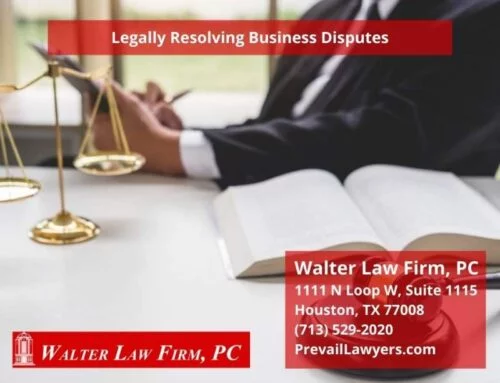PART 3: Trial – Your Day in Court
Most cases in Harris County are tried within 6 to 18 months of the time they were filed. While this sounds like a long time, it may not be. Before trial there is a lot of work to be done in gathering the facts, making sure that you have the documents or witnesses that can present those facts to the court, and getting the evidence into “admissible” form – that is, making sure that it is in a form which complies with the rules of evidence. Depending on the type and complexity of the case, number of parties, witnesses and experts, 18 months may not be long enough. Each court controls its own docket – that is, the judge gets to determine when the case will be called to trial, and what steps they will require the parties to take before trial.
In justice court, cases are set for a particular day, and many judges will stay until all of the cases set that day are either tried, settled, or continued to a new day. In county court, cases are set for a one week period, and in District Court, the trial settings are for a two week period. In County and District Court, the parties remain “on call” to come to the courthouse for trial at any time during the trial setting. Talk to your lawyer about the trial schedule – as the trial date approaches, your lawyer can get a better idea from the court about the schedule, and when or if your chase will be called to trial. Most courts will provide 24 to 48 hours notice if your case is being called to trial. Any case not tried or settled during the trial setting will be reset, usually within 6 months.
Most jury cases in County or District Court will take 2 to 4 days to complete. The first thing that happens is that the lawyers and the judge will meet to discuss the case and the types of evidence that is expected. Certain types of objections to witnesses or exhibits can be handled at this time, and exhibits which are not objected to can be pre-admitted into evidence, saving time for both the court and the parties.
In each phase of the trial, the plaintiff goes first, then the defendant. This is because the plaintiff has the “burden of proof.” In other words, if the plaintiff fails to prove the case, the defendant wins – even if the defendant doesn’t say anything. However, civil cases are different from criminal cases. A criminal case is one filed by the state – and if you lose, you go to jail. A civil case, such as a business dispute or marital or child custody case, is brought by a private citizen or business. In a criminal case, the prosecutor must prove the case “beyond a reasonable doubt” – a very high standard to meet; and all 12 of the jurors must agree on a verdict. In a civil case, the plaintiff’s burden is only to prove the case by a “preponderance of the evidence” – that is, more than 50% -and 10 of 12 jurors is enough for a verdict.
As soon as the lawyers and the judge have finished discussing the exhibits and what evidence is expected, a jury panel is called in. The lawyers talk to the prospective jurors to find out their attitudes, opinions and ideas about the facts and circumstances of the case. You can assist your attorney by observing the jurors and how they respond to questions – two sets of eyes are better than one. After each attorney has questioned the prospective jurors, and the court has excused those that have a pre-conceived idea of the outcome of the case, you and your lawyer will decide which of the jurors you don’t want. Usually, each side will be able to eliminate 6 prospective jurors from the panel. The first 12 people on the panel who are not eliminated, either by the court or by the lawyers, are your jury.
Next is the opening statement. The attorney will tell the jury their client’s story – what they think occurred, and preview the evidence that will be presented. Next the witnesses are called to tell their side of the story. After all of the witnesses have testified, and the parties have presented all of their evidence, the lawyers and the judge will meet to prepare the charge – the instructions the jury will be given and the questions they have to answer. Once the charge is prepared, each side makes its closing argument, using the testimony, exhibits and inferences from the evidence to convince the jury that their view of the facts is the most correct. The jury then meets to discuss the case, and answer the questions. The court will render its judgment based on the jury’s answers.
Finally, a written judgment will be prepared that reflects the result – but it may not be over yet. Within 30 days after the judgment is signed by the court, either party can appeal. Alternatively, the case could still settle, the judgment may be paid, or additional action may be required to collect the judgment.
As with many other things, lawsuits are “all the same, but they’re all different.” Call your favorite lawyer about the specifics of your case.






